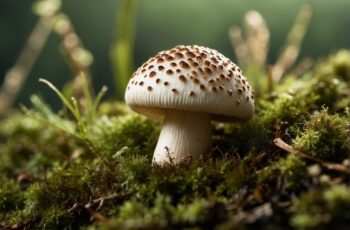When you’re looking to indulge in the unique experience of savoring morel mushrooms, understanding the nuances of their pricing is key. Morels are esteemed in the culinary world for their earthy and nutty flavor, which can transform any meal into a gourmet delight. As you explore the market, you’ll find that fresh morels typically command a price that reflects their coveted status and the challenges associated with harvesting them.
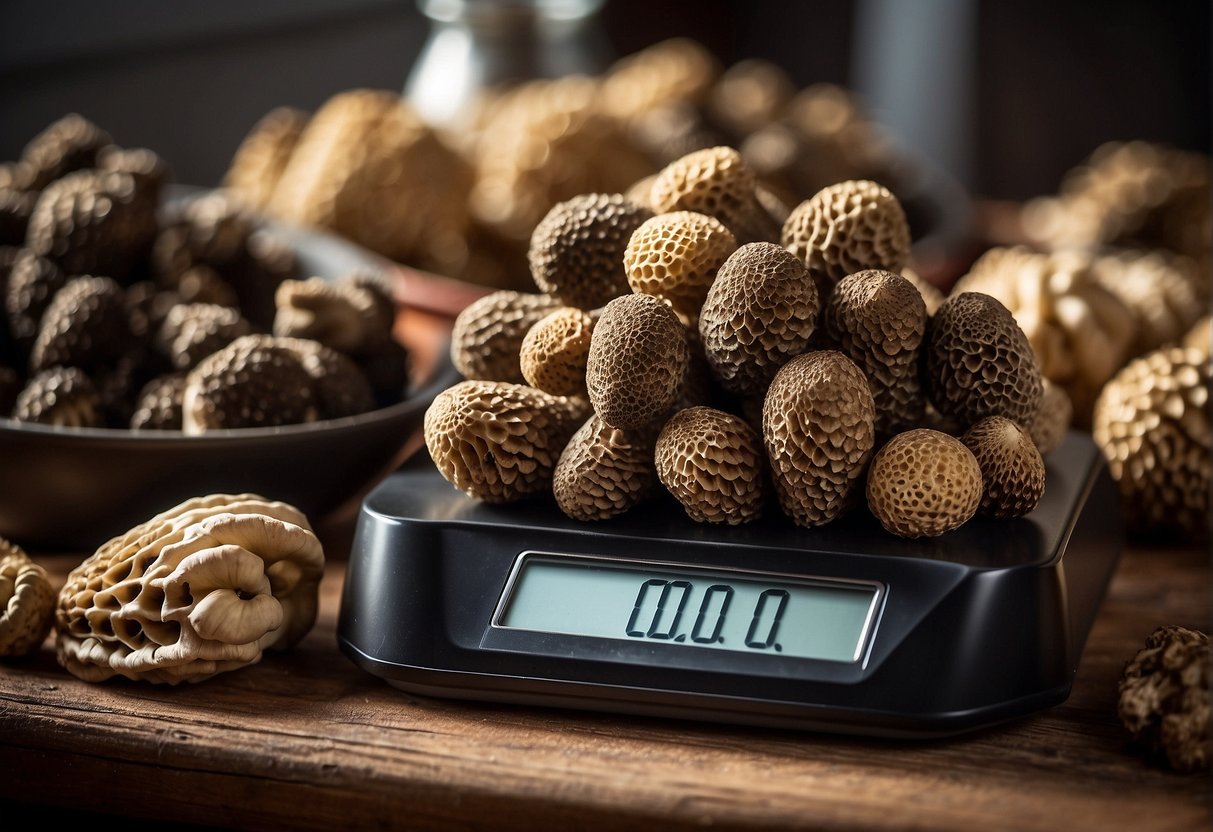
Hunting for morels can be an exciting pursuit, with their seasonality and elusive nature often translating into adventure for foragers. However, this labor-intensive process, combined with their rarity, directly influences their cost per pound. When you purchase morels, you’re not just buying a mushroom; you’re acquiring a piece of the wilderness, a delectable result of expert foraging. Depending on variables such as availability, and whether you’re opting for fresh or dried morels, the prices can vary, but expect them to be higher than your average fungi.
Before heading to your local farmers’ market or specialty store, it’s wise to be informed about current market trends for morel mushroom prices. Keep in mind that with morels, you’re investing in not just flavor but a culinary experience that’s sought after by chefs and food enthusiasts alike. Whether added to a rich sauce or enjoyed as the star of the dish, morels bring a touch of the wild to your table, with prices that are as extraordinary as their taste.
Market Insights and Morel Pricing
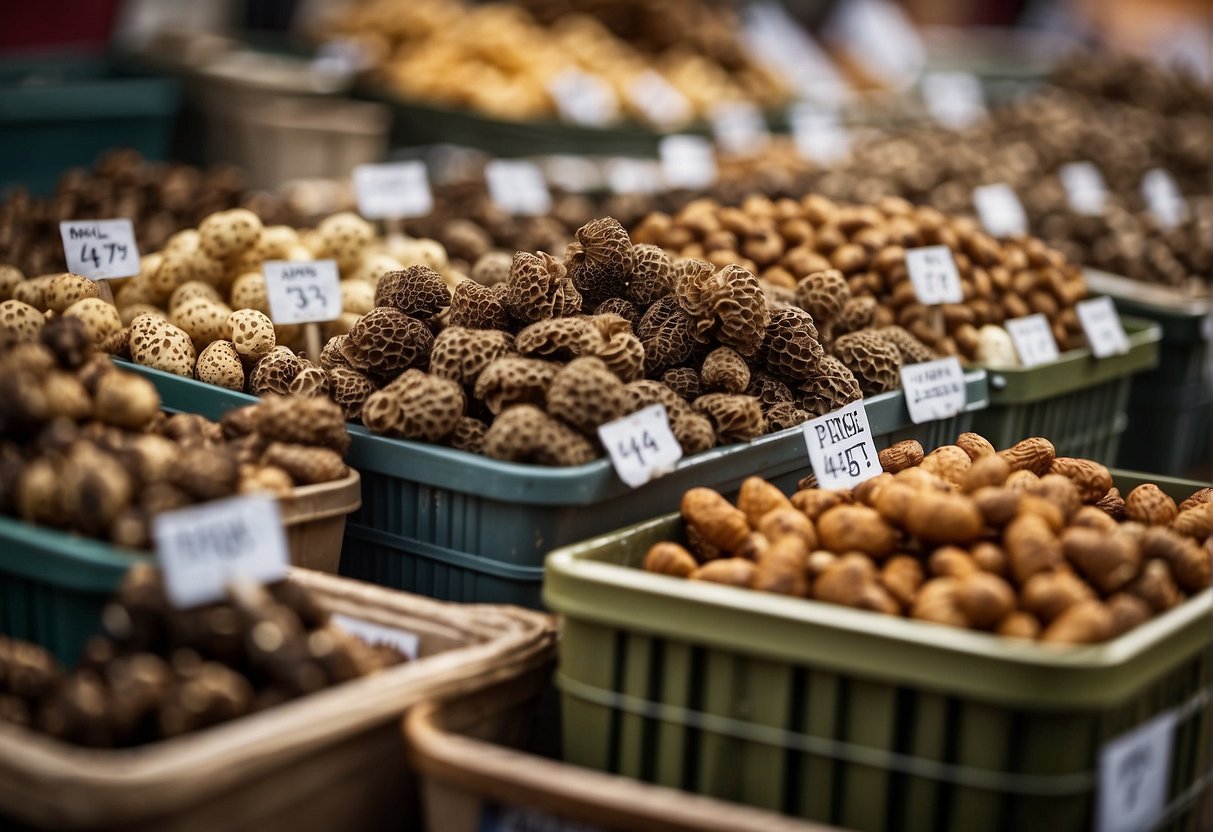
When you’re out in the woods, basket in hand, hunting for the elusive morel mushrooms, understanding market trends and pricing can be as satisfying as the forage itself. Here’s what you need to know.
Factors Affecting Price
Season: The morel mushroom, or Morchella, is a seasonal specialty. Limited availability outside its natural springtime fruiting period creates a classic case of supply and demand, which significantly influences morel prices.
Region: Your location can impact the cost. For example, morel mushrooms in areas where they’re less common may fetch a higher price due to increased demand and reduced supply.
Quality and Size: The grade and size of morels matter greatly. Pristine, large specimens often command higher prices for their desirability in culinary applications.
Retailer: Prices could vary significantly between a local farmer’s market, higher-end retailers like Whole Foods, and online marketplaces such as Amazon. Often, the more direct your source, the better the price you’ll get.
Price Comparison with Other Mushrooms
- Morels vs. Shiitake/Oyster: While morels are highly sought-after and can command prices upwards of $30 to $60 per pound, they are markedly more expensive than widely cultivated mushrooms like shiitake and oyster mushrooms.
| Mushroom Type | Price Range per Pound |
|---|---|
| Morel | $30 – $60 |
| Shiitake | $6 – $12 |
| Oyster | $5 – $10 |
Note: These prices can change based on the factors mentioned above.
Whether you’re a buyer or a seller, your knowledge of the morel market is critical. Remember, prices aren’t set in stone and can fluctuate due to a variety of market factors, so stay informed and adjust your expectations accordingly.
Morel Characteristics and Appeal
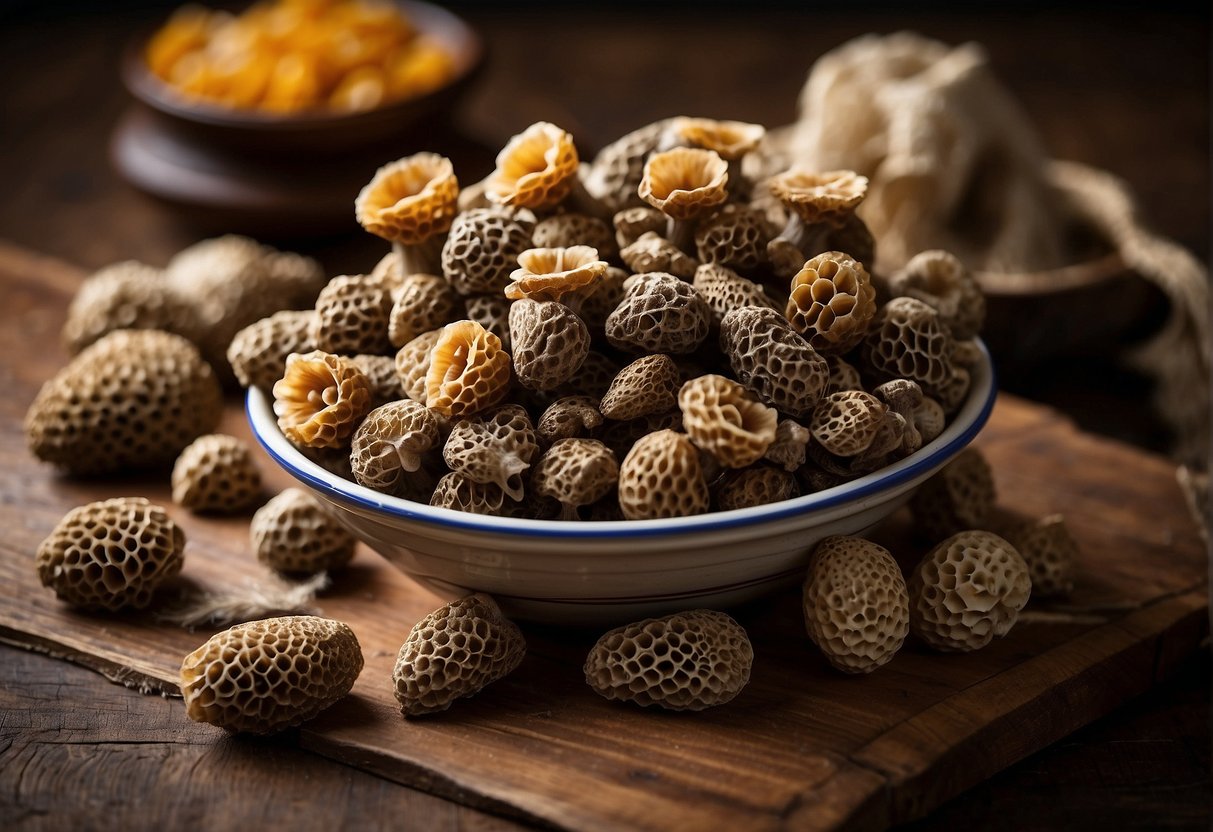
As you discover the world of morels, you’ll find that their remarkable characteristics and wide culinary appeal have earned them a special place in the hearts of chefs and foragers. These fungi are not only treasured for their distinct flavor, but also for their nutritional benefits, which include protein, essential minerals, and a low-fat profile.
Culinary Significance
The culinary world prizes morels for their exquisite taste and meaty texture, making them an incomparable delicacy in a variety of dishes. When cooked, these mushrooms release an earthy, unique flavor that enhances everything from simple sautés to elaborate sauces. Chefs and cooking enthusiasts often highlight morels as a springtime favorite, adding a touch of luxury to the dining experience. Their flexible nature in the kitchen means they can be incorporated into dishes both simple and complex, always leaving a memorable impact on the palate.
Morel Varieties and Features
- Black Morels (Morchella elata): Recognized by their darker color and conical shape, these morels are celebrated for a stronger, earthier taste.
- Yellow Morels (Morchella esculenta): Often lighter in color with a rounder, bulbous cap, yellow morels are sought after for their slightly milder, yet equally rich flavor.
- Grey Morels (Morchella tomentosa): These are known to be younger specimens that later mature into black morels.
All morels are identified by their distinctive honeycomb-like appearance, which not only contributes to their unique aesthetic but also provides an interesting texture in dishes. Whether you are in the woods foraging for the freshest specimens or selecting the finest at your local market, understanding these nuances can greatly enhance your culinary adventures.
Foraging and Harvesting Morels
As a forager, your understanding of the seasonal availability and harvesting techniques for morels is crucial to a successful hunt. Recognizing the importance of sustainability and ethical practices ensures the continued abundance of these coveted mushrooms.
Seasonal Availability and Foraging Techniques
Morels are a springtime delight, emerging when soil temperatures consistently reach the 50s (F). Your best window to forage these mushrooms is when daytime temperatures stay within 60-70°F. Be on the lookout for natural indicators, such as the blooming of certain wildflowers, to pinpoint the beginning of morel season.
- Foraging Tools: A simple mesh bag and a sturdy stick can be your best friends while searching through forests.
- Techniques: Gently rake the leaf litter aside and keep your eyes peeled—morels camouflage well.
Remember, moisture levels are key—
- Higher moisture can spur more prolific growth, but too much can lead to early decay.
- Lower moisture means slower growth, possibly leading to limited availability.
Your foraging technique directly impacts the supply and growth rates of morels in years to come, so harvest wisely.
Sustainability and Foraging Ethics
Foraging morels is more than just finding a rare and delicious mushroom—it’s about respecting the environment they flourish in. Ethical harvesting means taking only what you need, ensuring that plenty of mushrooms are left to release their spores and reproduce.
- Labor Intensity: The effort required in searching dense woodlands underlines the labor involved in foraging.
- Limited Availability: Due to seasonality and morels being foraged, not farmed, there’s a built-in scarcity.
Consider the following to maintain sustainability:
- Never overharvest; leave enough for others and for regeneration.
- Harvest using a mesh bag to allow for spore dispersal as you continue your search.
Morels are not only a prize find for their rarity but also for their nutritional benefits. They’re rich in fiber, copper, potassium, and vitamin D, making them a sought-after forage item. By following a mushroom foraging course or learning from experienced foragers, you’ll ensure that your harvesting process is both responsible and fruitful.
Storage and Preparation of Morels
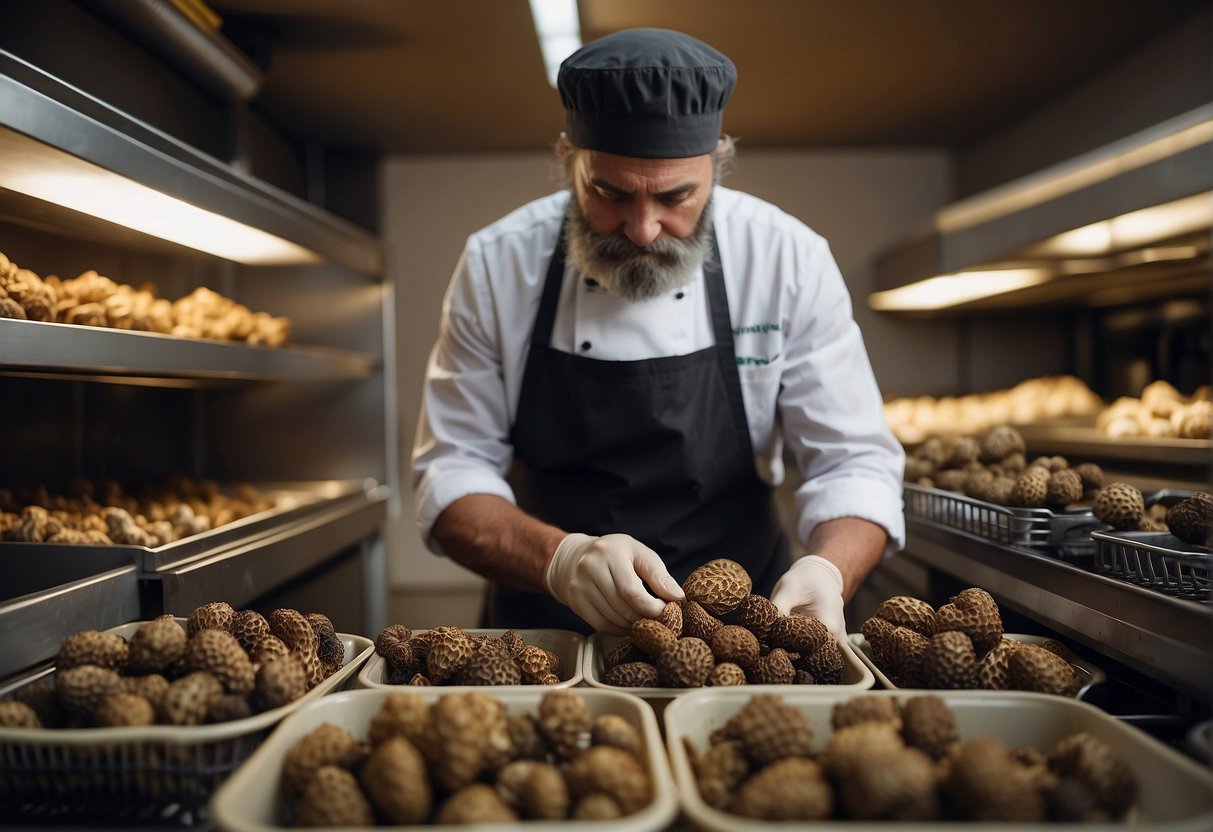
When you bring home morels, you’re handling a delicate, labor-intensive product that’s both low in fat and a good source of protein. Proper storage and preparation enhance their unique umami flavor and preserve their sought-after texture and quality.
Drying and Preservation
After foraging or purchasing these earthy treats, drying them is an excellent way to preserve their character and extend their shelf life. To correctly dry morels:
- Clean them gently to remove any visible dirt.
- Slice them in half to ensure even drying.
- Spread them out on a drying rack in a well-ventilated area, away from direct sunlight.
- Turn them regularly until they’re completely dehydrated, typically 24-48 hours.
- Store your dried morels in an air-tight container. They can last for several months this way, retaining their quality until you’re ready to savor them.
Dried morels, once rehydrated, are versatile for guide to preserving morels, adding richness to stews, soups, and sauces.
Cooking Tips for Morels
When you’re ready to use morels in your cooking, whether freshly foraged or reconstituted dried ones, consider these pointers:
- Rinse fresh morels thoroughly under cool water to dislodge any residual soil or insects.
- To maintain their firm texture, sauté morels over medium heat with a pat of butter for a delectable side dish.
- If you’ve got frozen morels, thaw them in the refrigerator before cooking to preserve their quality.
- When cooking morels, remember they originate from places with distinct forests, like Virginia, so match them with ingredients from similar terrains for an authentic experience.
Integrating morels into your culinary repertoire rewards you with a unique dining experience that pays homage to their exclusive origin and the considerable effort it takes to bring them to your table.

